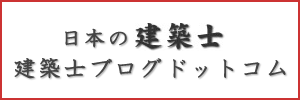No. 34: リエンジニアリングは万能薬ではない (November 30, 2009)
1990年代、リエンジニアリングが一世を風靡し、ビジネス界では、ダウンサイジングがもてはやされた。しかし、リエンジニアリングを実践した多くの企業は、コスト構造を改善するより前に売り上げが低下してしまった。つまり、技術革新を進める能力もまた同じように急速に低下させてしまった。リエンジニアリングは短期的にコスト上のメリットをもたらすかもしれないが、決して未来へのビジョンを与えてはくれないし、株主に長期にわたる最高利益を保証してくれない。つまり、短期的な利益向上は、従業員や地域社会の長期的な幸福にはつながらない。意思決定は、「後ろ向きの思考」と「前向きの思考」で成り立っている。前者はつねに直感的で、原因分析的になる傾向にある。後者は直感のかわりに多くに変数値を集めて評価し予測を行う。前者の代表ともいえるリエンジニアリングは万能ではないし、後者を欠いた前者だけの思考は必ず行き詰ることは歴史が証明している。 (Written by Shigeo Sunahara of CBC, Inc.)
No. 34: Reengineering is not a panacea. (November 30, 2009)
In the 1990s, reengineering predominated in the business world and downsizing based on reengineering was widespread worldwide. However, most companies that implemented reengineering decreased sales before they improved cost structure. That is, they decreased the ability to develop innovation drastically before they successfully reorganize their cost structure following what Hammer and Champy proposed. Although reengineering allows for cost reduction in the short term, it does not create a vision for the future nor does it assure shareholders of the maximum profit in the long term. That is, short-term profit improvement does not lead to long-term happiness of employees and regional community. Decision making is made up of two kinds of thoughts, namely, “backward-looking thought” and “forward-looking thought.” The former is always intuitive and liable to analyze causes, and the latter collects many valuable values, evaluates, and estimates instead of relying on intuition. Reengineering that symbolizes the “backward-looking thought” is by no means a panacea, and history has already proved that decision making based only on the “backward-looking" deadlocks in the long run.
No. 34: Reengineering is not a panacea. (November 30, 2009)
In the 1990s, reengineering predominated in the business world and downsizing based on reengineering was widespread worldwide. However, most companies that implemented reengineering decreased sales before they improved cost structure. That is, they decreased the ability to develop innovation drastically before they successfully reorganize their cost structure following what Hammer and Champy proposed. Although reengineering allows for cost reduction in the short term, it does not create a vision for the future nor does it assure shareholders of the maximum profit in the long term. That is, short-term profit improvement does not lead to long-term happiness of employees and regional community. Decision making is made up of two kinds of thoughts, namely, “backward-looking thought” and “forward-looking thought.” The former is always intuitive and liable to analyze causes, and the latter collects many valuable values, evaluates, and estimates instead of relying on intuition. Reengineering that symbolizes the “backward-looking thought” is by no means a panacea, and history has already proved that decision making based only on the “backward-looking" deadlocks in the long run.



